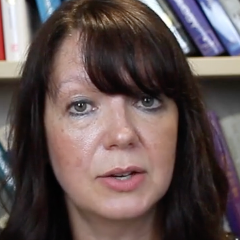You are not currently logged in. Please create an account or log in to view the full course.
The Alveolus and the Capillary
- About
- Transcript
- Cite
Gas Exchange
In this lecture, Dr Helen Wallace (University of Liverpool) teaches us about the microscopic structures in our lungs and blood that allow for the exchange and transport of the two gases involved in respiration: oxygen and carbon dioxide. To do so, we: (i) introduce the alveoli and capillaries as the exchange surfaces that allow for oxygen and carbon dioxide to be exchanged, using Dalton’s Law to explain how diffusion is maintained in the desired direction, before then (ii) appreciating how oxygen and carbon dioxide are then transported in the lungs by haemoglobin.
The Alveolus and the Capillary
In the first mini-lecture, we take a look at the mechanism of gas exchange in the lungs. In this lecture we learn how carbon dioxide and oxygen are constantly exchanged between structures in the lung called alveoli and vessels in the circulatory system called capillaries. To begin, we outline some of the key cellular features of the alveolus: the exchange surface of the respiratory system, understanding the structure and function of alveolar type I and type II cells. Then, we move onto Dalton’s Law to appreciate how partial pressures of different gases interact with one another. With this gained knowledge, we return to the respiratory system and learn about its adaptations in making gas exchange efficient, and then understand how these exchange surfaces can be compromised in diseased patients.
Cite this Lecture
APA style
Wallace, H. (2022, August 30). Gas Exchange - The Alveolus and the Capillary [Video]. MASSOLIT. https://massolit.io/courses/gas-exchange
MLA style
Wallace, H. "Gas Exchange – The Alveolus and the Capillary." MASSOLIT, uploaded by MASSOLIT, 30 Aug 2022, https://massolit.io/courses/gas-exchange

